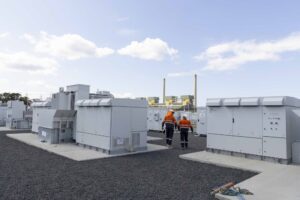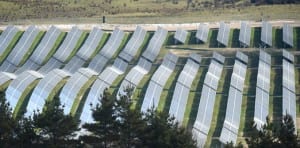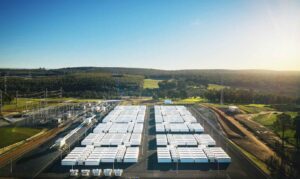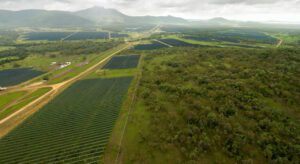Tesla Energy is teaming up with community-based retailer Energy Locals as it formally launches the second phase of its proposed virtual power plant in South Australia, with high hopes that it may yet deliver the 250MW first promised.
The pairing of Tesla with Energy Locals, which will make its first entry into South Australia and act as the retailer for the 1,000 Tesla batteries and rooftop solar to be installed under this second stage of the plan, was announced on Wednesday by state energy minister Dan van Holst Pellekaan.
Ironically, the Tesla VPP was unveiled by the previous Labor government and initially dismissed by new Liberal Premier Steve Marshall after his election win in March because he favoured his own plan to provide $100 million in rebates for household storage to 40,000 homes.
That plan, since finessed with $100 million of low interest loans from the Clean Energy Finance Corporation, has resulted in three battery storage developers – sonnen, Alpha-ESS and Eguana Technologies – setting up manufacturing or assembly operations in the state.
There is now the chance that both schemes will go ahead. Energy Locals CEO Adrian Merrick told RenewEconomy that if the second stage of 1,000 installations was successful, and finance available, then he would like to go ahead with the third stage that was originally targeting 50,000 homes and 250MW of capacity.
The Tesla scheme is focused on low income housing and all the 1,000 properties to receive the 5kW of rooftop solar below to Housing SA. They will pay a discounted rate for their electricity to Energy Locals.
“If we can make stage two successful … we’d be interested in the third stage,” says Merrick, adding that such a distributed energy resource would be a significant addition to network security and lower prices.
However, one party not happy with the VPP proposal is Adelaide-based solar manufacturer Tindo Solar, which missed out on the solar component. Australia’s only solar manufacturer says it was told earlier this year that the VPP would source half of its solar requirement from local content, and lifted production to 4MW on that basis.
However, Glenn Morelli says it was informed by Tesla a week ago that it had missed out on the tender, in favour of lower cost modules. The government press conference featured 270 watt panels from JA Solar. Morelli says the original tender had specified a minimum of 300 watts.
“Those sort of modules are out-dated and now they are dumping them on public housing for the sake of profit,” Morelli said. “We’re very disappointed, this is not a good deal for the public.” He said he was also disappointed that the state government had allowed this to happen.
A spokesperson for Tesla, which recently upped its prices on Powerwall 2 battery units, said in an emailed statement: “All suppliers are appointed under commercial in confidence. We appointed the best and most efficient companies, who were assessed on a variety of criteria through a competitive process, to deliver the best customer experience.
Minister van Holst Pellekaan said in a statement that the VVP will deliver cheaper electricity to some of South Australia’s most disadvantaged households and also lift the reliability of the state’s electricity network.
“We are working hard with Tesla to deliver their vision for a VPP to address the high bills hitting households, and welcome Energy Locals to SA as a new retailer to help boost competition,” he said.
“We have made South Australia the world capital of home batteries with our Home Battery Scheme attracting three battery manufacturers to South Australia and by driving forward with the VPP.”
The results from the first 100 batteries demonstrates the success of the concept with households seeing their grid consumption reduced by more than 70 per cent, leading to lower power bills.
The minister confirmed that subject to the success of second phase of these 1,000 systems and the ability to secure private finance, it could grow to 50,000 homes. “It would become a 250MW virtual power plant, and complement the State Government’s plan for more clean, affordable and reliable power,” the statement said.
Merrick said the project would provide lower prices for customers and give them more control over their energy use. “We’re proud to bring new competition for customers with cheaper, cleaner power,” Merrick said.








